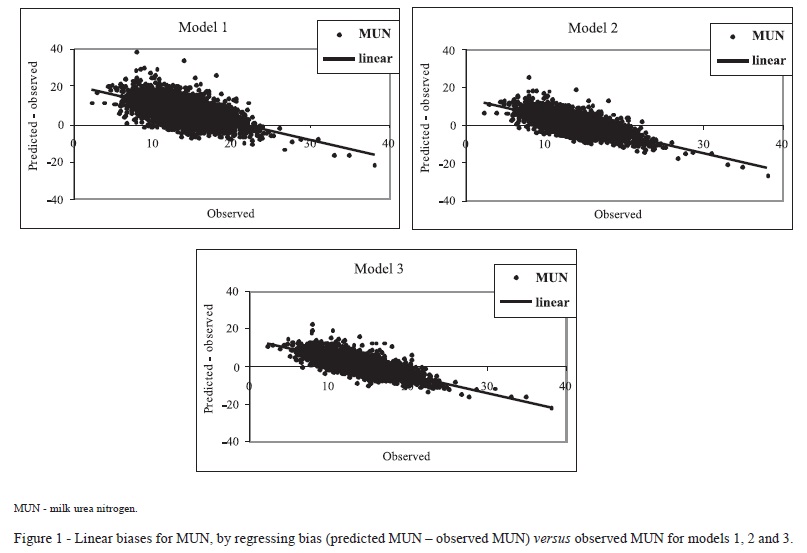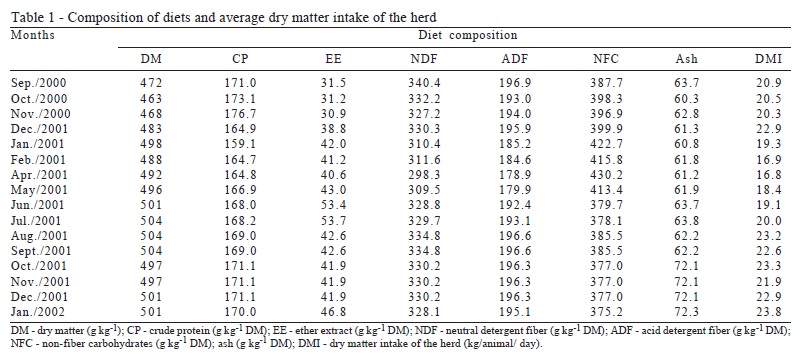The objective of this study was to validate three different models for predicting milk urea nitrogen using field conditions, attempting to evaluate the nutritional adequacy diets for dairy cows and prediction of nitrogen excreted to the environment. Observations (4,749) from 855 cows were used. Milk yield, body weight (BW), days in milk and parity were recorded on the milk sampling days. Milk was sampled monthly, for analysis of milk urea nitrogen (MUN), fat, protein, lactose and total solids concentration and somatic cells count. Individual dry matter intake was estimated using the NRC (2001). The three models studied were derived from a first one to predict urinary nitrogen (UN). Model 1 was MUN = UN/12.54, model 2 was MUN = UN/17.6 and model 3 was MUN = UN/(0.0259 × BW), adjusted by body weight effect. To evaluate models, they were tested for accuracy, precision and robustness. Despite being more accurate (mean bias = 0.94 mg/dL), model 2 was less precise (residual error = 4.50 mg/dL) than model 3 (mean bias = 1.41 and residual error = 4.11 mg/dL), while model 1 was the least accurate (mean bias = 6.94 mg/dL) and the least precise (residual error = 5.40 mg/dL). They were not robust, because they were influenced by almost all the variables studied. The three models for predicting milk urea nitrogen were different with respect to accuracy, precision and robustness.
dairy cow; milk urea nitrogen; nitrogen excretion; protein utilization








